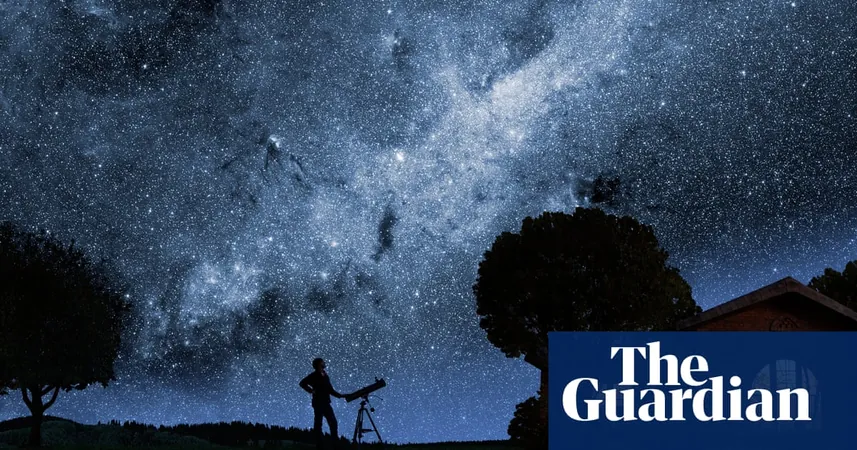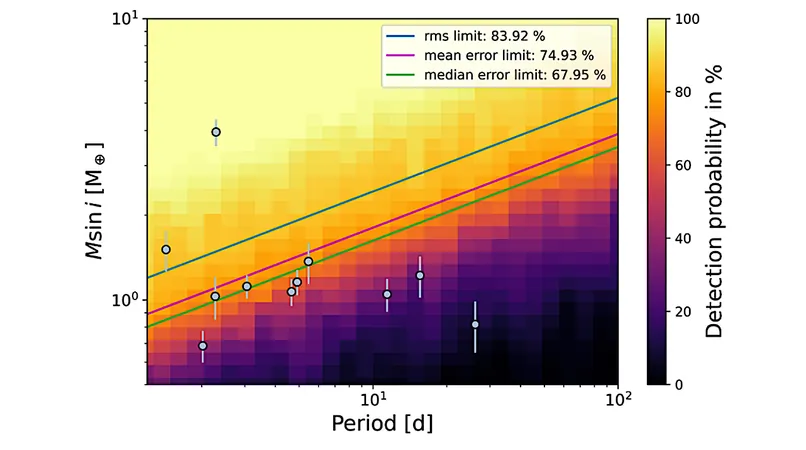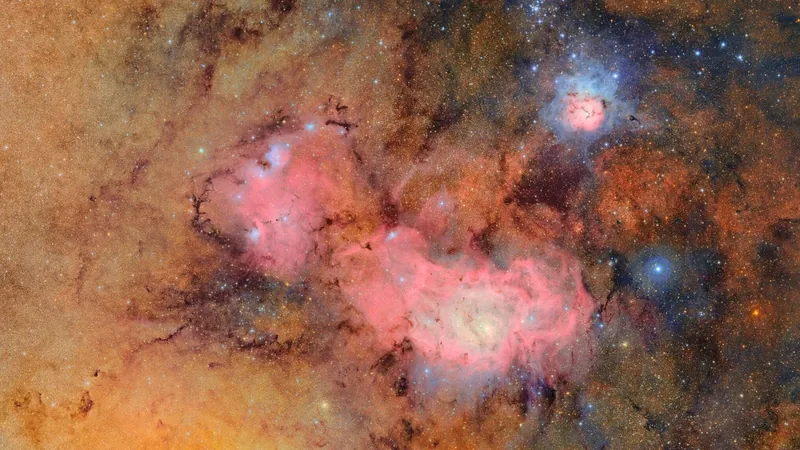
Stargazing Alert: Witness a Spectacular Planet Parade in the Night Sky!
2025-01-15
Author: Yu
Stargazers Treated to Rare Planet Parade
Stargazers everywhere are in for a cosmic treat this month as an extraordinary 'planet parade' will unfold, allowing viewers to witness most of the solar system's planets visible simultaneously in the night sky.
Astrophysicist Dr. Rebecca Allen, co-director at Swinburne University's space technology and industry institute, emphasizes that events like this are rare. She notes that it's particularly special to spot outer planets like Neptune as they align above the horizon.
Key Dates and Viewing Conditions
Beginning around January 21, celestial bodies such as Mars, Jupiter, Saturn, and Venus will be particularly prominent. For those equipped with binoculars or telescopes, Uranus and Neptune may also come into view, revealing the beauty of our cosmic neighborhood.
"This incredible line-up occurs because all these planets are situated on the same side of the sun and fall within the same field of view from our perspective on Earth," Dr. Allen explained. However, she clarified that they aren't physically moving closer; it's merely an optical illusion created by their orbits.
Notable Planets to Observe
Brighter planets closer to the sun, such as Venus—often referred to as the 'morning star' or 'evening star'—will be distinctly visible. Venus goes through various phases that mimic our moon, making it a fascinating object to observe over the coming weeks.
The planets Venus and Saturn recently experienced a 'conjunction,' appearing dramatically close together in the night sky. Observers with the right equipment can catch a glimpse of Saturn's iconic rings, appearing as a thin slice.
Mars, during this period, will look particularly striking. With the sun positioned in opposition, viewers will find the red planet shining brightly as it rises in the night sky.
Jupiter, the largest planet in our solar system, will be near the Orion constellation, a formation familiar to many Australians as 'the saucepan.' Stargazers with telescopes can zoom in on Jupiter's surface weather patterns and its multitude of moons.
Viewing Tips and Additional Phenomena
Con Stoitsis, a representative from the Astronomical Society of Victoria, noted that on clear nights around 9:45 PM, four of the celestial bodies become 'like beacons' in the sky. He advises looking towards the north: Venus and Saturn will be on the left, Jupiter on the right, and Mars will appear later, glowing in a 'brilliant red.'
Additionally, stargazers may spot satellites streaking across the vast sky—actually satellites that look like swiftly moving bright stars. Stoitsis suggests that taking a moment to relax under the stars can reveal several of these objects over the course of an hour.
Comet C/2024 G3 (ATLAS) and Peak Viewing
For astronomy enthusiasts, there's also excitement surrounding the comet C/2024 G3 (ATLAS), which has recently survived a close encounter with the sun. Just like the mysterious behavior of a cat, Stoitsis likens the unpredictability of comets to their erratic tendencies; this particular comet might shine brightly around January 18 or possibly fade into obscurity.
The planet parade will peak around January 21 as the moon wanes, providing optimal viewing conditions. Dr. Allen encourages aspiring astronomers to grab a sky map—many of which are now available as mobile apps—or visit local astronomical societies and observatories for guided sessions.
Final Encouragement for Stargazers
"We're incredibly fortunate," Dr. Allen remarked, "to experience this astronomical alignment within some of the most famous summer constellations: Orion, Gemini, and Taurus. It's the perfect opportunity to take kids out during school holidays and spot nearly all the planets this month."
So gather your binoculars, grab a blanket, and head outside—this stunning celestial display is not to be missed!




 Brasil (PT)
Brasil (PT)
 Canada (EN)
Canada (EN)
 Chile (ES)
Chile (ES)
 Česko (CS)
Česko (CS)
 대한민국 (KO)
대한민국 (KO)
 España (ES)
España (ES)
 France (FR)
France (FR)
 Hong Kong (EN)
Hong Kong (EN)
 Italia (IT)
Italia (IT)
 日本 (JA)
日本 (JA)
 Magyarország (HU)
Magyarország (HU)
 Norge (NO)
Norge (NO)
 Polska (PL)
Polska (PL)
 Schweiz (DE)
Schweiz (DE)
 Singapore (EN)
Singapore (EN)
 Sverige (SV)
Sverige (SV)
 Suomi (FI)
Suomi (FI)
 Türkiye (TR)
Türkiye (TR)
 الإمارات العربية المتحدة (AR)
الإمارات العربية المتحدة (AR)